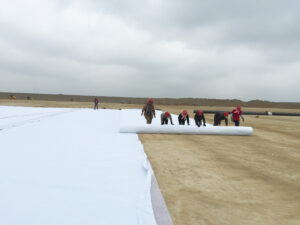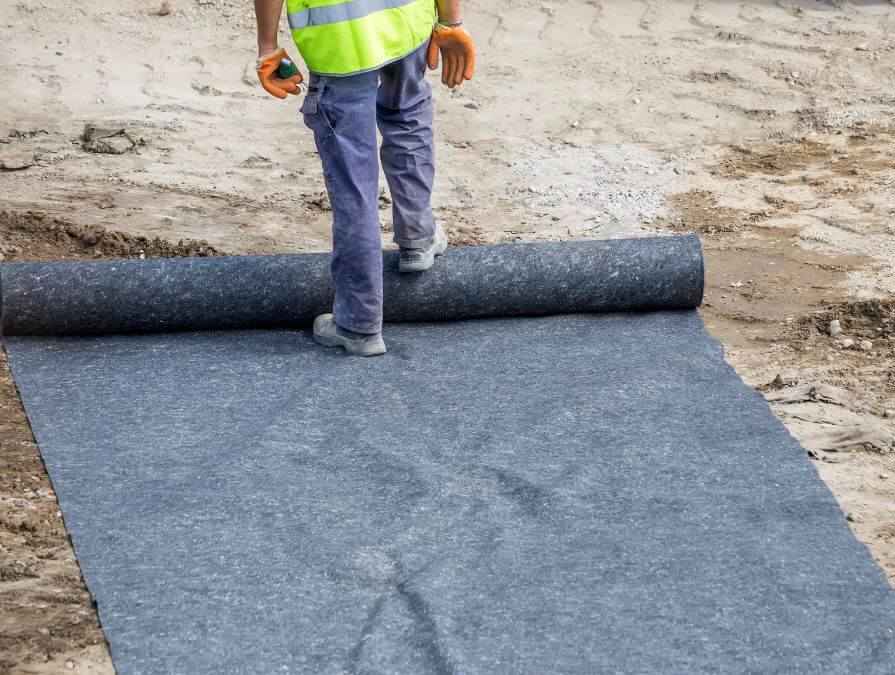4 installation processes of geotextiles
1. Preparatory work: According to engineering needs and design requirements, select the appropriate type, specification and quality of geotextiles. Before construction, it is necessary to fully clean and level the construction site to ensure that the construction environment is clean and tidy.
2. Laying geotextiles: Lay the geotextiles flat on the construction surface, and cut and splice according to the design requirements. During the laying process, it is necessary to pay attention to the degree of paving and the uniformity of tension. In case of special circumstances, such as large height difference of the construction surface, plastic geogrid reinforcement or tamping treatment is required to ensure the tight fit between the geotextile and the base layer.

3. Fix the geotextile: fix the geotextile in the field through buckles or other fixing devices to prevent it from moving or rolling over during use. When fixing, attention should be paid to uniformity, and no obvious deformation and damage should occur.
4. Inspection and acceptance: After the laying and fixing of the geotextile is completed, a comprehensive inspection and acceptance is carried out to confirm whether its installation quality and performance meet the requirements. If defects or quality problems are found, correct and replace them in time.
The above is the general installation process of geotextiles. The specific operation should be based on the engineering requirements, and the appropriate construction method and process should be selected. At the same time, pay attention to safety during the construction process and strictly abide by safety regulations to ensure the safety of construction personnel and equipment.
[wpforms id=”40″]
Author

Founded in 2002, Tinhy's team focuses on the manufacturing, marketing, installation, application and research and development of geosynthetic materials.
View all posts





